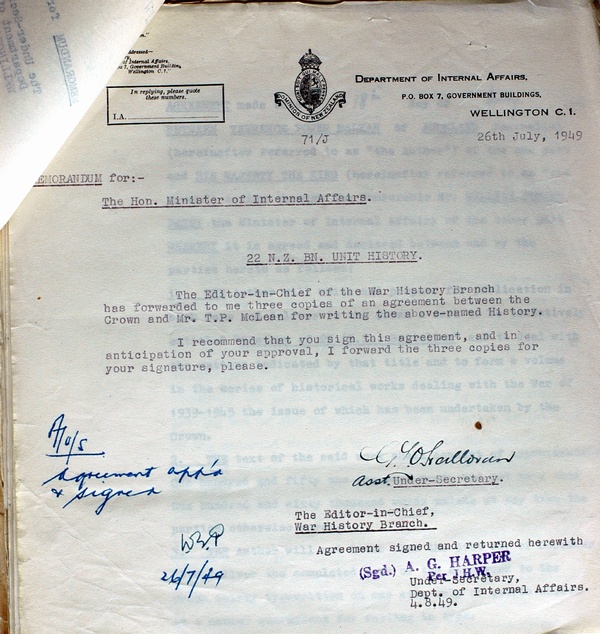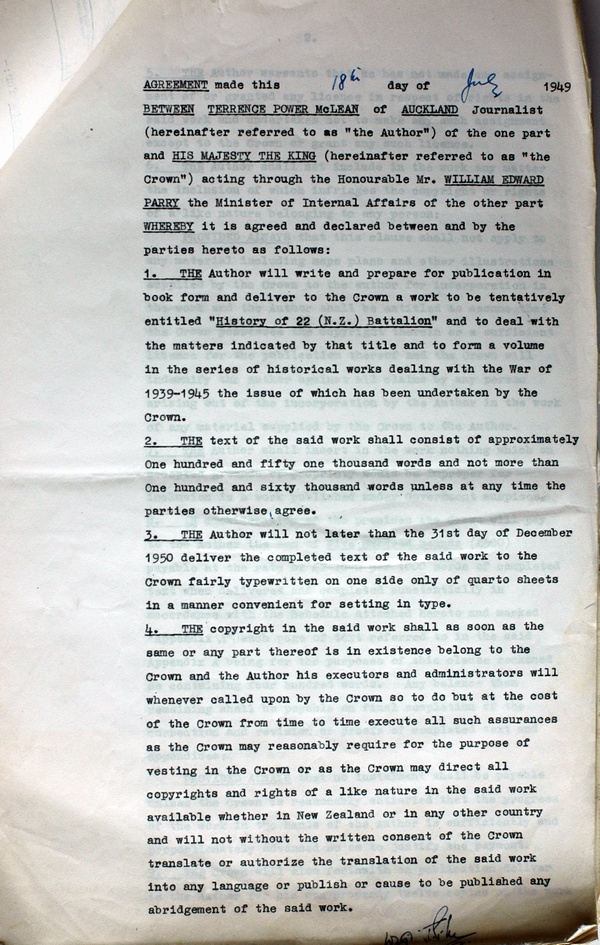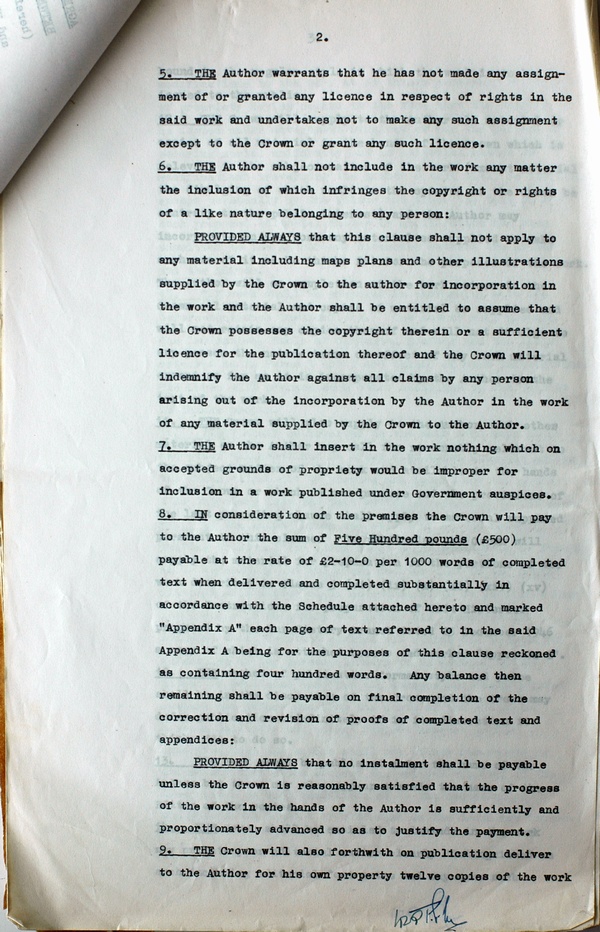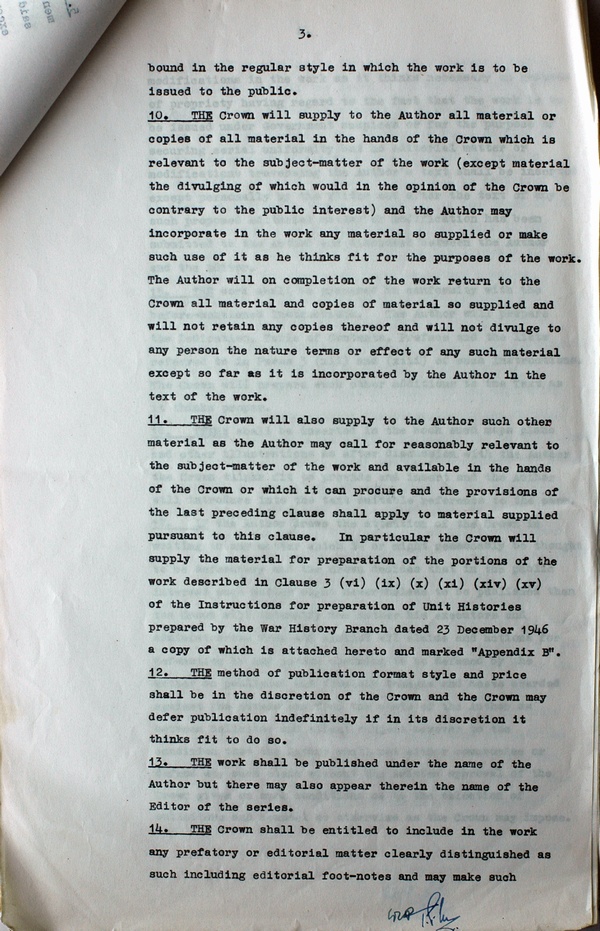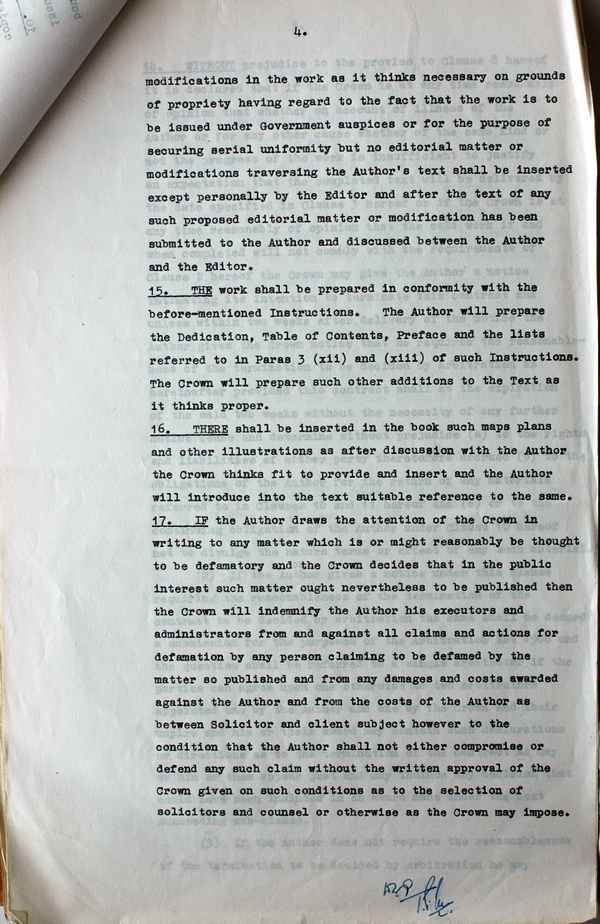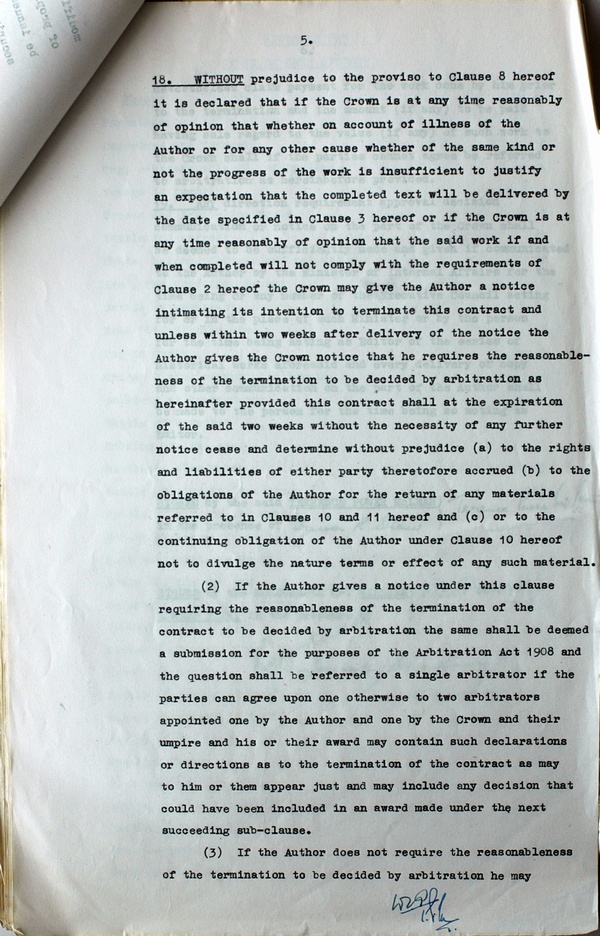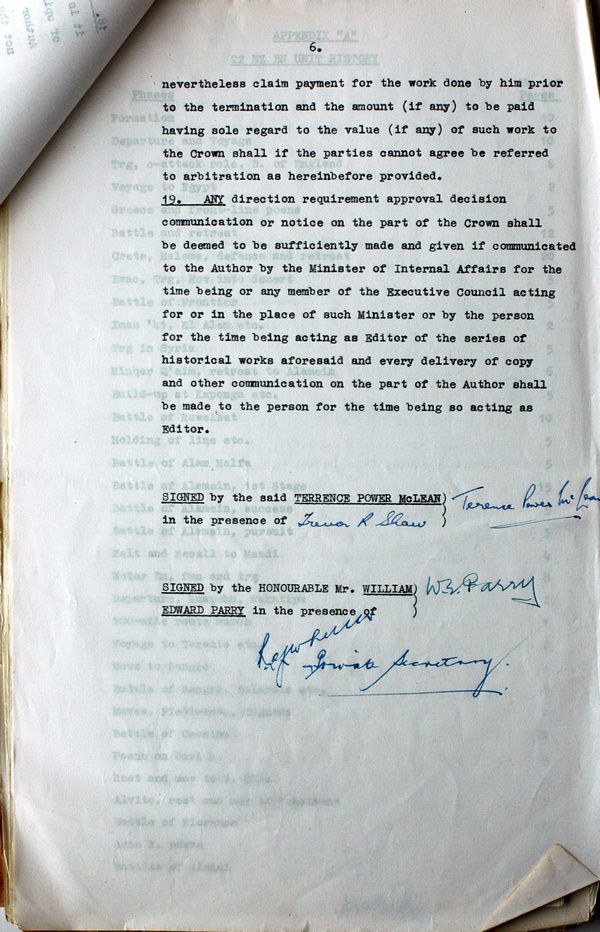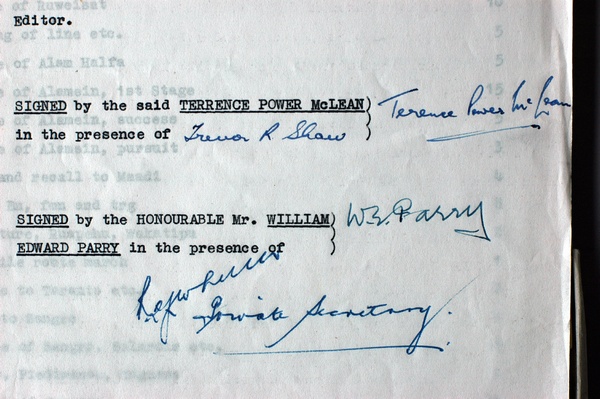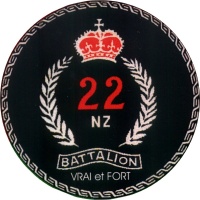
22nd Battalion 2NZEF
"Vrai et Fort"
Official History of New Zealand in the Second World War.
22nd Battalion 2NZEF
Jim Henderson 1958
This book captures the story of the 22nd Battalion - the men and events from January 1940 when the Battalion was formed in Trentham Camp, to the Battalion's renaming in Japan in 1947. In keeping
with the Battalion's history, the book also had a long history, being one of the last of the 52 volumes to be published. The story of it's gestation is recorded below.
The book in electronic format
All of the volumes of the Official History series are long out of print, but copies can often be obtained second-hand. Some are relatively rare and command high prices. In view of this, and as part of a move to digitise books
important to New Zealand's history, funding was made available by the Kippenberger family to scan and digitise the books. The work was undertaken by the NZ Electronic Text Centre (NZETC), an initiative by Victoria University
of Wellington. A copy of each book was unstitched, scanned and then sent to India to be double-typed to eliminate errors. The NZETC then encoded the text and made the files available in various formats.
In 2024 the NZETC was closed and files were archived by the National Library of New Zealand. Web links to the NZETC now redirect to the National Library.
You can download a copy of all of the official history volumes in PDF format or in other formats compatible with e-readers here.
To ensure the 22nd Battalion volume continues to be available to readers, the NZETC version can be read on this website here (please note some of the internal links do not work).
History of the Official History
The 22nd Battalion of New Zealand was the longest serving of the NZ Infantry battalions. It was a close-knit group of men who were keen to have their story told. By the end of the war they had already
formed the 22nd Battalion Association, with branches throughout the country. Through these contacts they influenced the War History Branch to contract one of their own to write their story. No one else could be entrusted
with their memories and no one else would understand the Battalion. Prospective authors had been suggested but all had been rejected by the Battalion. Some men were reputed to have threatened to cooperate only with
one of "their" men. Time was passing, memories were fading and the first Battalion histories had been published. And so, CAPT Terence Power McLean, journalist and Battalion Intelligence Officer, was talked into the job. To
the men he was just the man for the task. He was well-known and well-liked by the men. He was a jounalist by trade.
On 18 July 1949, “TP” or “Tired Terry” as he was affectionately known by the Battalion (due to his continual complaints about tiredness) was commissioned by the War History Branch to write the official history of the 22nd
Battalion. His contract was for £500 (about $55,000 in 2025 dollars). The men were pleased and memories flooded in. TP had until 1 December 1950 to produce a completed draft of around 150,000 words. He set to the task with gusto.
Despite the fee, writing the battalion history became a labour of love for TP. He became bogged down in the minute details that seemed vitally important to the men. In 1946 he had joined
the New Zealand Herald as sports editor. His reputation as a sports journalist was growing and he was now overseas accompanying All Black tours. By about 1952 it became clear that the manuscript was no closer to publication,
so the contract was terminated. Most battalion histories had now been published and the 22nd men were growing anxious. So reluctantly they agreed to a replacement. Another author was contracted, this time for £800
to write the history. He had experience, having written another unit history. So Jim Henderson’s version, so different in style from TP’s manuscript, was finally published in 1958, one of the last of the unit histories to appear in
print. The 22nd men were relieved, but some felt it did not capture the essence of being a front-line infantry - they grumbled "just what they had expected from a nine-mile sniper" (an artillery gunner).
Distributing copies of the Official History to the Men of the Battalion
Once the book was finally published it could be distributed. The print run was 2,500 copies, of which 500 went to the printer (Coulls Somerville and Wilkie) for sale through their Whitcombe and Tombes shops at 17/6 each.
The bulk were kept by the War History Branch. Around 700 copies were distributed free to ex-members of the Battalion. Although free, each man (or his next of kin) had to apply to the department, supplying name, rank,
number and current address. Their details were checked before a copy was sent, along with a certificate. Reviewers at all of the major newspapers (including "Truth") were sent 23 copies and around 97 were sent gratis to
politicians, current and retired senior army officiers, libraries and New Zealand high commissions and embassies. (I can confirm the copy sent to the High Commission in Canberra is still there - one of the few full sets of
Official History publications in existence and still in pristine condition).
The T.P. McLean draft of the Official History
The “TP” version of the 22nd Battalion Official History is available here.
Return to Home Page
Last updated: 3 April 2025
|


